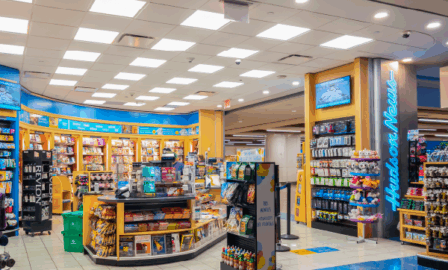2017 Holiday Sales & Retail Insights
As shoppers continue to frequent online retailers for convenience, what should brick and mortar stores be doing to secure shopper traffic for what the National Retail Federation (NRF) predicts to be a 2017 holiday sales shopping season worth nearly $682 billion?
Annual holiday eCommerce sales have continued to grow through the past decade. This year, eCommerce sales in the US are anticipated to see a 5-year high 16.6% growth rate (compared to the previous year). With the growth of online sales, brick and mortar stores are beginning to cash in on what online channels are unable to offer shoppers: an emotional and experiential shopping engagement. Taking this one step-further, by integrating online and brick and mortar operations to create a streamlined single omni-channel shopping experience and a proactive approach to National Returns Day, retailers can not only compete with the physical retail interruptions spurred by the digital revolution, they can take advantage of it.
The 2017 Holiday Sales Season
Bolstered by strong consumer confidence, low unemployment, and solid economic performance, the 2017 holiday sales season is predicted to grow by 3.6%. Reported on the NRF Holiday Forecast call, the 2017 holiday shopping season is expected to total between $678.75 billion and $682 billion, up from $655.8 billion in retail sales during the 2016 holiday season. The NRF projects non-store sales to grow 11-15%. Confidence in the growth, despite the strong and intense hurricane season, stems from the longer holiday shopping season for 2017. Up one day from 2016, there are 32 days between Thanksgiving and Christmas. Furthermore, December 25, 2017, falls on a Monday, giving shoppers an extra weekend compared to 2016 to complete their holiday shopping. In addition, a recent report from Azoya referenced that this year’s Single’s Day shows “huge potential for U.S. retailers for the upcoming Black Friday and Cyber Monday.” Single’s Day (11/11, the largest shopping holiday globally), hit a record $25 billion in purchases, a 40% increase from last year. So, with online sales increasing, what are retailers doing to secure shopper traffic?
1. Experiential Shopping
Despite attempts by online retailers to spice up their websites during the holiday season with white stringed lights, green-and-red color schemes, and holiday motif galore, eCommerce entities are unable to fully recreate the full consumer shopping experience during the holiday season. During the 2016 holiday sales season, retailers like Walmart hired more “holiday helper” staff to assist with gift selection and purchase, while also featuring toy demos for the season’s hottest toys. Most retailers are looking to set themselves apart from market-dominating Amazon.com. On October 3rd, Nordstrom opened the first in what is expected to be its newest line of stores, called Nordstrom Local. The 3,000-square foot prototype in Melrose Place, Los Angeles is the retailer’s most recent attempt to take part in the experiential shopping trend. With no merchandise inventory, the store instead tailors to the local shopper, featuring an in-store online pickup, an alteration and tailoring service, nail salon, bar, and its very own Trunk Club. Forbes reports that customers can also employ personal stylists at the shop to assist with their own wardrobe, gifts, and special occasion outfits. As eCommerce continues to grow and make up an even greater percentage of total retail sales during the holiday season, we can expect retailers to focus in on providing shoppers with an experience at physical store locations.
2. The Online and In-Store Integration
So, how can shoppers expect to see this omni-channel incorporation occur? Aside from online-purchases and click and collect models, retailers are expected to implement integrated digital campaigns across channels including mobile, email, and social marketing. Campaigns should not only integrate digital media channels but also feature promotions that activate online and in-store, making it easier for shoppers to take advantage of the holiday season deals and discounts offered by retail locations. Even after it’s too late to ship an item, retailers should keep online campaigns running, especially for shoppers looking for that last minute gift. According to Google, mobile searches for “where to buy” have increased by over 85% since 2015. Activating strong online campaigns can ensure that when a shopper thinks of your store for the last-minute gift shopping.
We can expect an integration of online and in-store purchases through online shopping terminals to see the full catalog of available products. Already, stores like H&M have in-app technology that allows users to scan the barcodes on products using a mobile phone camera which reveals the full selection of available sizes and colors across the country. Shoppers are then able to purchase the product directly through the application and the piece of clothing arrives at their doorstep. Through the integration of the online and in-store experience for shoppers, retailers can take advantage of the increasing consumer confidence expected this holiday season.
3. Beating National Returns Day
The key to conquering National Returns Day is to prevent these returns before they happen. But, when they do, optimize product returns to the shelves and learn the reason for the return. Prevention methods could include strategies to understand the use of the product, by incorporating interactive product displays and demos, and by minimizing size and fit discrepancies. Apple stores have already cashed in on these demonstrations, with their Apple “Town Squares.” Town Squares feature demonstrations of Apple’s newest product line, with sessions aimed at teaching consumers how to use their products, and encourage the use of products before purchasing.
Despite preventative measures, returns are going to occur and when they do, getting the product back out onto the shelves for resale as quick as possible is important, especially during the hectic holiday season. Walmart is using the digital revolution to ramp up its return processing power this 2017 holiday sales season. The 4,700 store mega-retailer promises a 30-second or less in-store return process—given that this process is started on the store’s mobile app. An improved returns process can have a variety of benefits including increased shopper loyalty and improved inventory management.
As we head into the 2017 holiday sales season, the strong consumer confidence, low unemployment, and solid economic performance should result in growth opportunities for retailers. As the rest of the calendar year unfolds, the season’s winners will be companies who are able to respond quickly to trends and engage with shoppers throughout this 2017 holiday sales season.
If you have found this information valuable and would like to receive future insights about the retail industry, subscribe to our insights below.
Co-author and contributions from Lukas Gschwandtner.



